Making the Best Car in the World
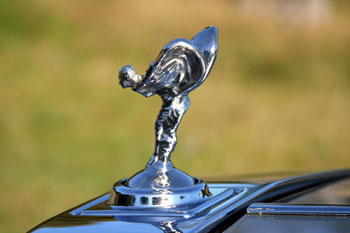
There are many great chauffeur cars, but there is only one Rolls-Royce. A name that has become a byword for excellence since Charles Stewart Rolls and Frederick Henry Royce first started manufacturing cars in 1904. Almost a century later The Rolls-Royce Phantom wafts out of the Rolls-Royce factory in the Goodwood Estate. A state of the art facility born from BMW’s acquisition of the Rolls-Royce marque.
There are many great chauffeur cars, but there is only one Rolls-Royce. A name that has become a byword for excellence since Charles Stewart Rolls and Frederick Henry Royce first started manufacturing cars in 1904. Almost a century later The Rolls-Royce Phantom wafts out of the Rolls-Royce factory in the Goodwood Estate. A state of the art facility born from BMW’s acquisition of the Rolls-Royce marque.
Beware silent cars
This is no ordinary factory. For a start it is designed to blend right into it’s luscious surroundings. With Europe’s largest “living roof” and lots of natural interior light it is a suitably inspiring and fitting place of work which I suspect is a little different from Henry Royce’s first Manchester workshop! The living roof is made from thousands of sedum plants which not only change colour with the seasons, but insulates to save energy in the winter months. I recently had the pleasure of being shown round the new Rolls-Royce plant. At the clinically spotless and impressive facility I witnessed the manufacture of some Phantoms, Phantom EWBs and the delicious new Phantom Drophead.
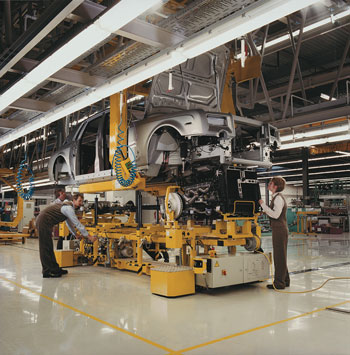
The bodies and engines are manufactured in Germany. In England the body shells are painted before being joined together in a lifelong embrace with the engine, gearbox and the rest of the drive mechanism. The complete drive mechanism is assembled on a high tech frame. Ensuring that each component is in exactly the right place before the whole chassis is carefully aligned with the bodywork. Apparently I was lucky to see this marriage of automotive excellence. My chaperone explained that although he had been around the whole factory countless times he had never before witnessed this particular, but significant part of the Phantom build process.
“Take the best that exists and make it better.”
Sir HENRY ROYCE
Leather
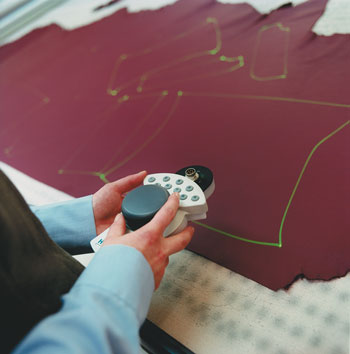
The leather team select only the best hides from Bavarian bulls with which to dress the car. Bavarian bulls are chosen because their hides do not stretch from calf bearing like the cows, plus there are no barbed wire fences in Bavaria, which means there are no scars on the animals. The leather is dyed right through, so that even if scratched the colour will shine through.
Woodwork
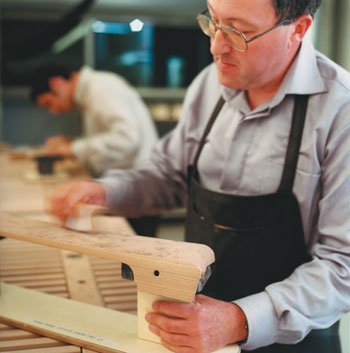
The woodworkers who form and shape the finest wood veneers, first start with wood from the same tree. Carefully bookmarking them so they are a perfect mirror image across the car.
The church of excellence
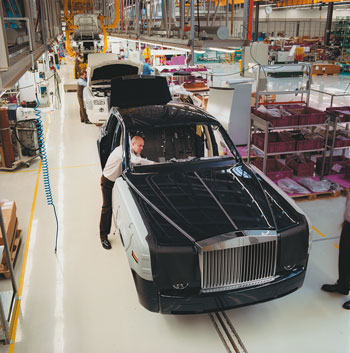
Through out my tour each craftsperson I saw was totally engrossed in their job. In a dedicated and almost religious way, the workers laboured as if handling a new born baby or some-other equally precious being. We were not even allowed to touch the cars, and even our Rolls-Royce guides had to seek permission from the workers before we were allowed to get too close to these amazing machines.
Each car I witnessed was unique. Some shared the same exterior colour, but all had different variations of leather and wood along with other differences. This helps make each Royce special. In no way does the manufacture resemble a traditional production line. Just like a finished Rolls-Royce doesn’t resemble a normal car.
